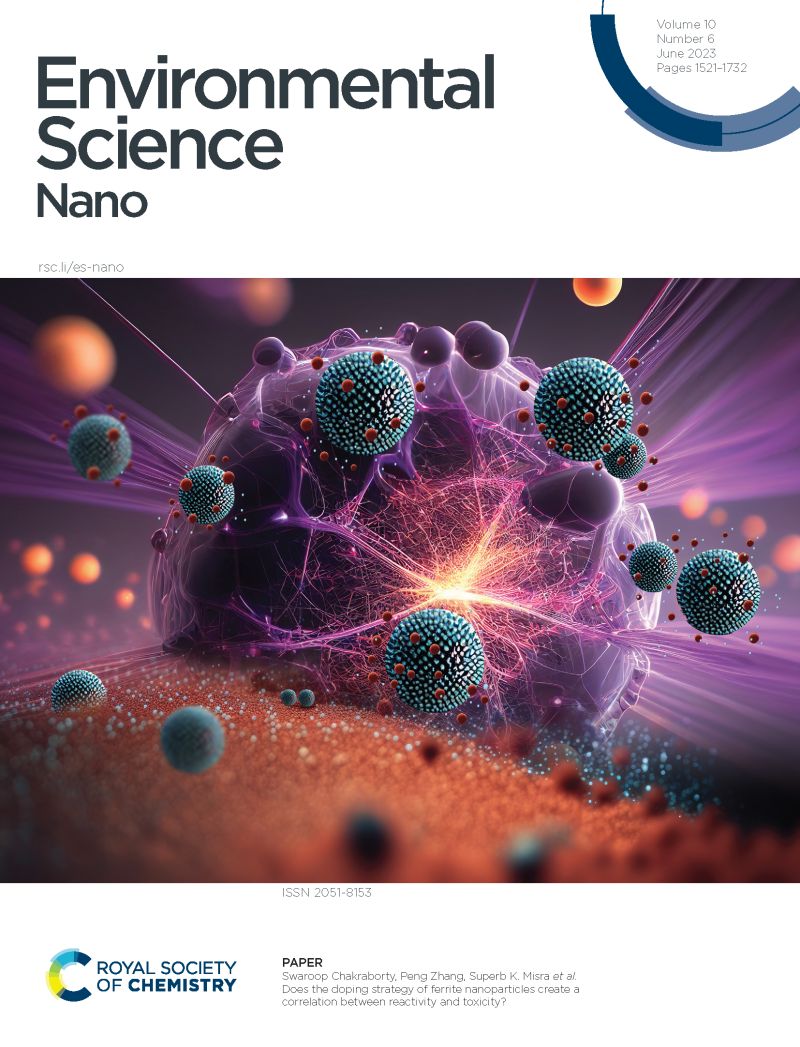Shape-Engineered Ag/Ag₂O/CuO Nanostructures for Synergistic Agrochemical Remediation and Microbial Inhibition
IF 5.8
2区 环境科学与生态学
Q1 CHEMISTRY, MULTIDISCIPLINARY
引用次数: 0
Abstract
The global society widely utilises pesticides to enhance agricultural productivity. These pesticides adversely affect the environment by leaching into groundwater and contaminating crops. To tackle this issue, we have synthesized Ag/Ag2O/CuO nanocomposite (NC) using one pot hydrothermal synthesis process at a low temperature as a potential source for the removal of toxins from wastewater. Comprehensive characterization of the NC was performed using various analytical techniques. The PXRD analysis confirms the synthesis of Ag/Ag2O/CuO NC. XPS validates a peak at 367.5 eV in the core level high-resolution spectra of Ag (O), which was fitted by a Gaussian profile, results in the 16.75% and 11.64% concentration of Ag and Ag+ ions respectively. DRS analysis observed a significant shift in the band gap from 1.51 to 1.65 eV in NC, this blue shift is attributed to the Moss-Burstein effect, due to the addition of high concentration of silver. The improved performance of the NC as photocatalysts can be attributed to the existence of oxygen vacancies, as confirmed by XPS investigation and EPR spectrum. The photodegradation of isoproturon has been performed using UV Light and produced Ag/Ag2O/CuO NC which exhibits photocatalytic degradation efficiency of 98%. The photocatalyst was also explored for its effectiveness in regeneration and repurposing of isoproturon photodegradation. Antibacterial activity against E. coli and Streptomyces toxytricini strain is observed and results in effective inhibition of the growth of bacteria using the produced NC.求助全文
约1分钟内获得全文
求助全文
来源期刊

Environmental Science: Nano
CHEMISTRY, MULTIDISCIPLINARY-ENVIRONMENTAL SCIENCES
CiteScore
12.20
自引率
5.50%
发文量
290
审稿时长
2.1 months
期刊介绍:
Environmental Science: Nano serves as a comprehensive and high-impact peer-reviewed source of information on the design and demonstration of engineered nanomaterials for environment-based applications. It also covers the interactions between engineered, natural, and incidental nanomaterials with biological and environmental systems. This scope includes, but is not limited to, the following topic areas:
Novel nanomaterial-based applications for water, air, soil, food, and energy sustainability
Nanomaterial interactions with biological systems and nanotoxicology
Environmental fate, reactivity, and transformations of nanoscale materials
Nanoscale processes in the environment
Sustainable nanotechnology including rational nanomaterial design, life cycle assessment, risk/benefit analysis
 求助内容:
求助内容: 应助结果提醒方式:
应助结果提醒方式:


